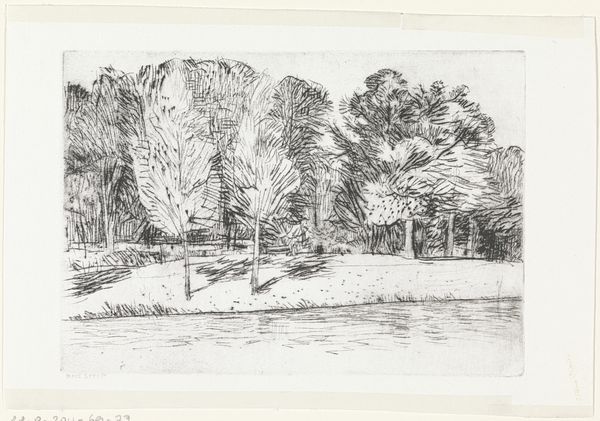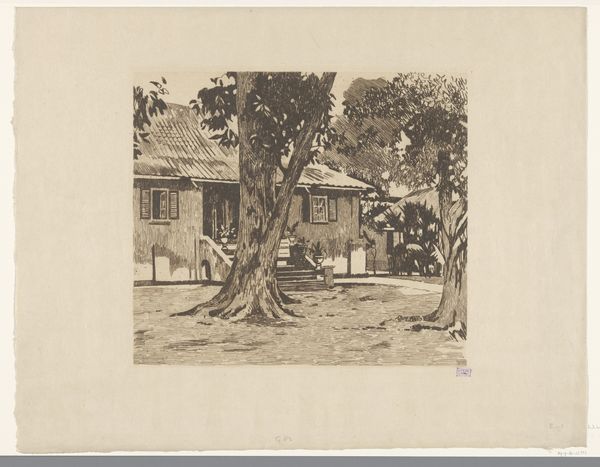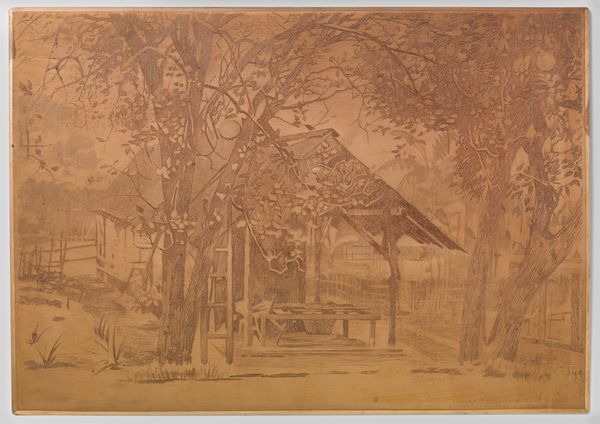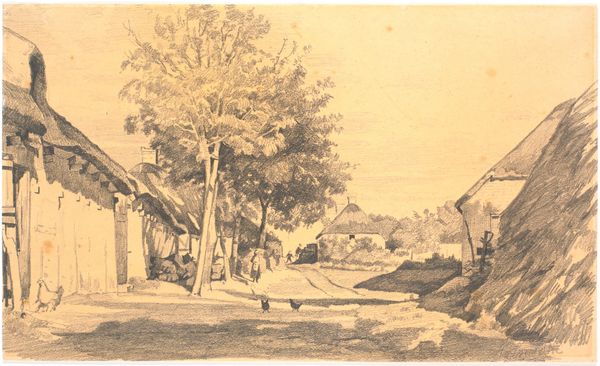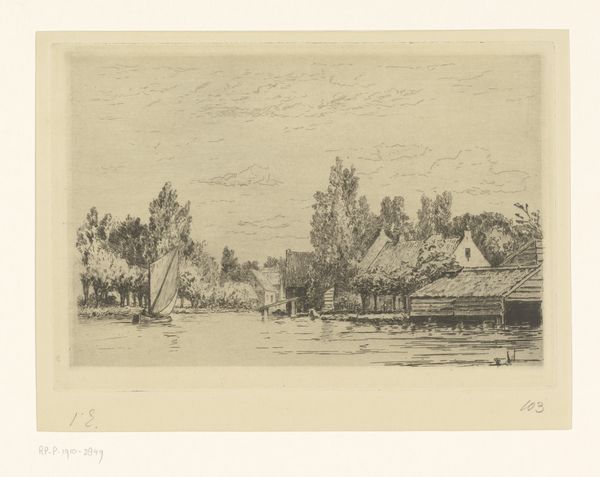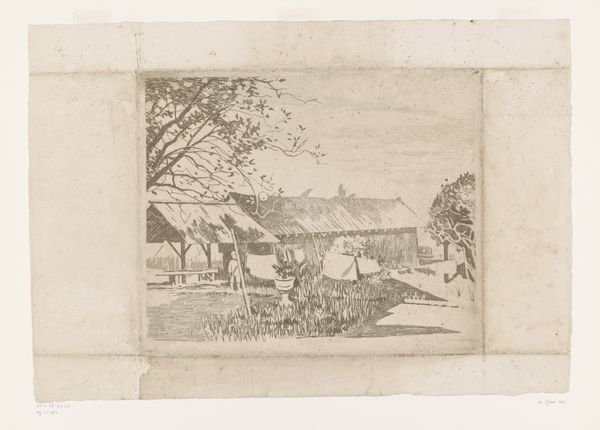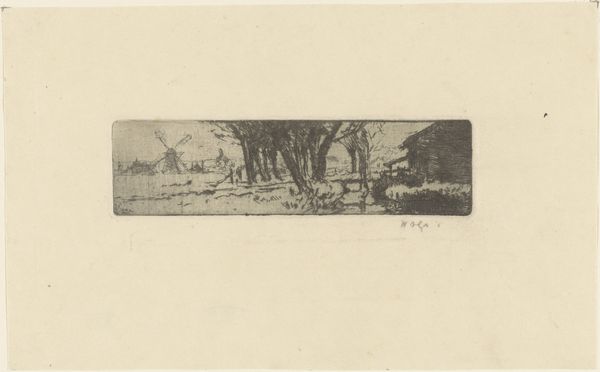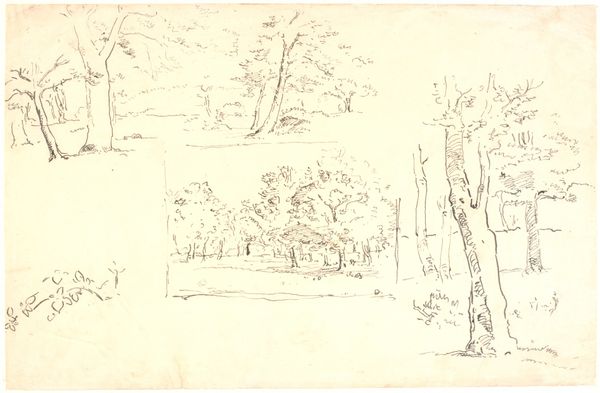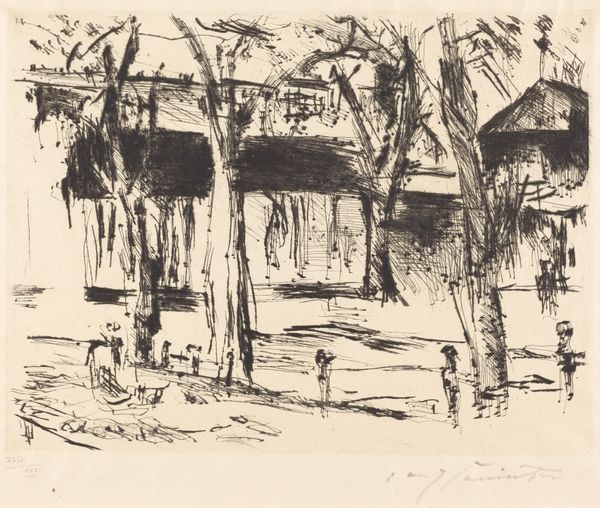
drawing, paper, pencil
#
drawing
#
pencil sketch
#
landscape
#
paper
#
pencil
#
orientalism
#
cityscape
#
realism
Dimensions: height 137 mm, width 225 mm
Copyright: Rijks Museum: Open Domain
Editor: This is "Huizen aan een laan in Nederlands-Indië," or "Houses on an Avenue in the Dutch East Indies," a pencil drawing on paper, probably created between 1920 and 1924 by Willem Witsen. I'm struck by the sketch-like quality, almost like a memory fading in and out. What do you see in this piece? Curator: I see the weight of colonialism embedded within this seemingly innocuous scene. Consider the avenue itself— a deliberate imposition of order and European ideals upon a landscape that likely held different, indigenous forms of organization. Does the foliage feel unruly to you, almost resisting the rigid lines of the architecture? Editor: I hadn't thought of it that way, but I see what you mean. There's a contrast between the wildness of the trees and the structured buildings. Is that a common theme in Orientalist art? Curator: Frequently, yes. The image becomes a symbolic space where control and the exotic intertwine, mirroring the complex power dynamics of the time. And what about the figures depicted? Do you perceive a certain stillness, or perhaps even a sense of being observed? Editor: They do seem passive, almost like props in the landscape. So, even a simple sketch can be a loaded image? Curator: Precisely! Even the seemingly neutral act of drawing carries a certain perspective, influenced by the artist's background and the cultural context. The symbols are subtle but potent. Reflect on how Witsen’s choice of perspective shapes our understanding of this place and time. It’s not just a street scene; it’s a narrative imbued with colonial implications. Editor: Wow, I'll definitely look at these kinds of images differently now. Thanks for opening my eyes to the deeper symbolism at play!
Comments
No comments
Be the first to comment and join the conversation on the ultimate creative platform.


